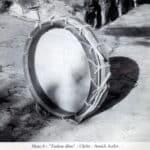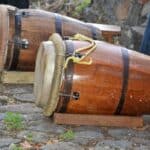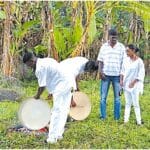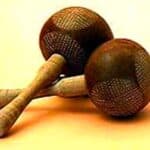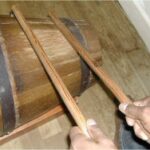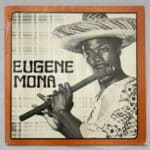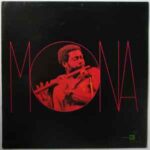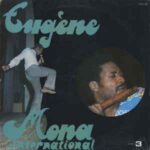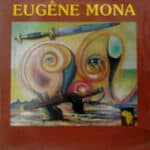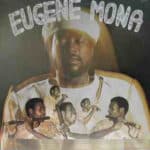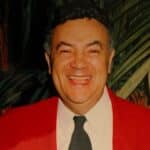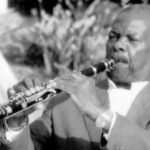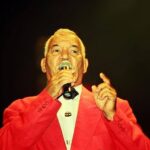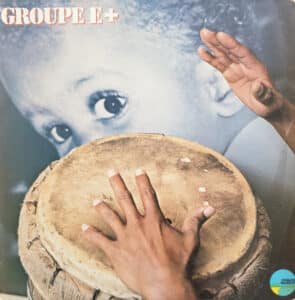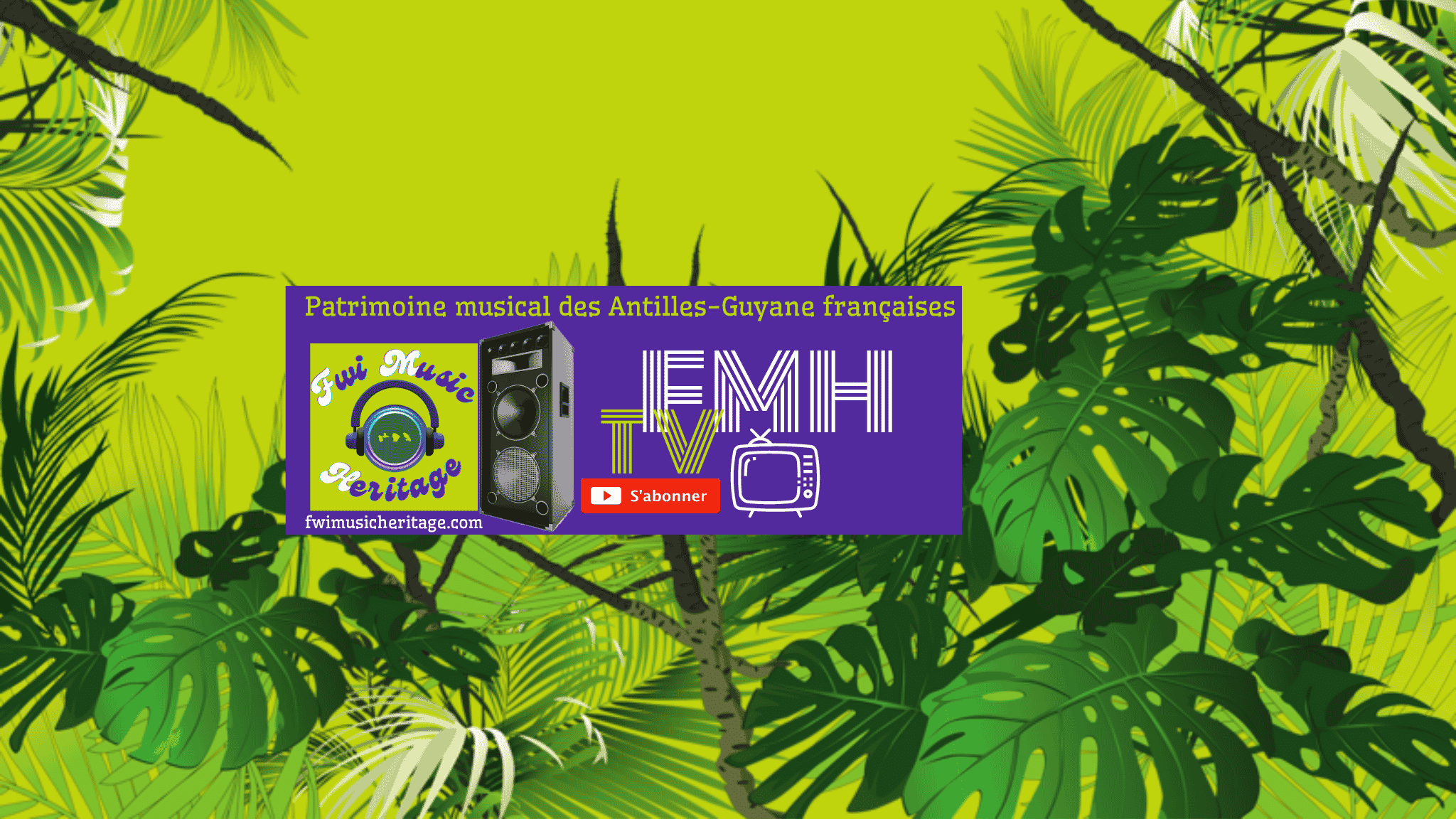Eugène Mona is considered the defender of Martinican culture and identity.
Spread over about twenty-five years, from the end of the 1960s to 1991, his career came to an abrupt end on September 21, 1991, the date of his death, at only 48 years old, just after having recorded a ninth album which was to mark his big comeback.
Let's see in a few points, the main characteristics of this extraordinary artist.
Originally from the south, he revealed itself in the north of Martinique
Born on July 13, 1943 in Vauclin, in the south-east of Martinique, it was during his apprenticeship as a cabinetmaker that Eugène Mona settled in the town of Marigot, in the North Atlantic, which became his stronghold. Note that the town of Sainte-Marie, not far away, is considered the cradle of bèlè.
Eugène Mona was the name he had chosen
Just like Malcolm X, Eugène Mona considered that a name had been imposed on him which was not his own, in his case, Georges Nilecam, his surname at birth.
During his training as a cabinetmaker, Georges Nilecam frequented a woman whose children were those of a certain Mr. Mona from the Platform district in Marigot.
In the town, this adventure was known and friends to annoy her called her Mona. Far from being offended or ashamed of it, he put this name to good use for posterity.
Soon, "Eugene" was dropped and called only "Mona".
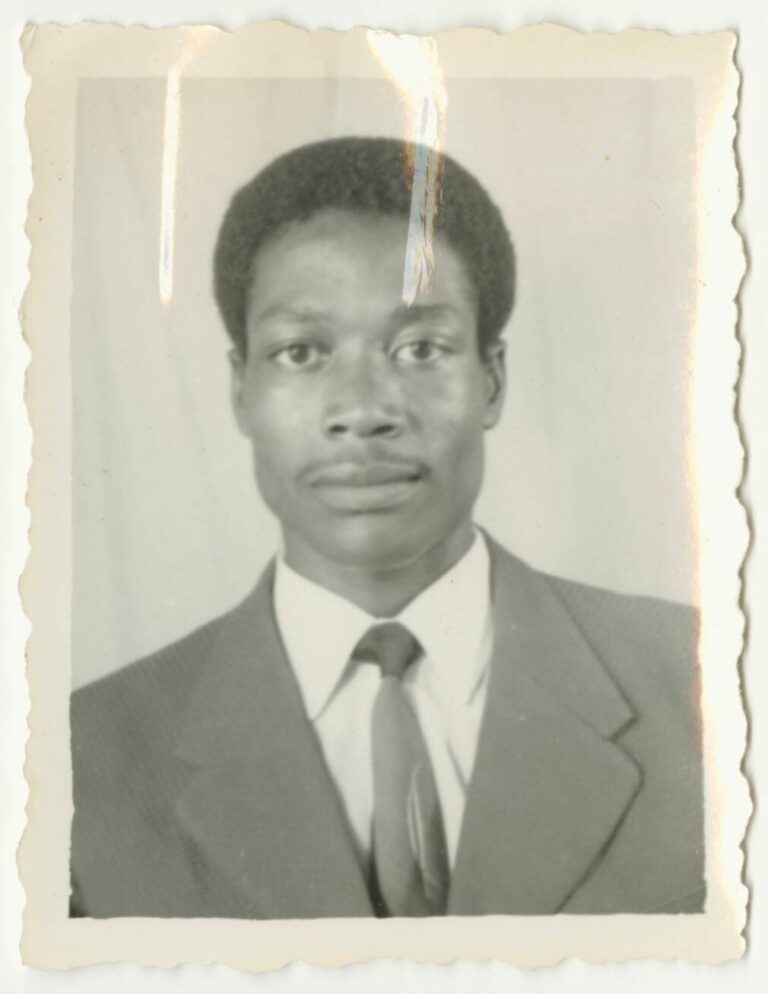

Whole character
Eugène Mona spoke loudly, laughed loudly and got very angry. He didn't know half measures. On edge, he could go from one feeling to another in a short time. Demanding with others, he was above all demanding with himself.
It lost him since he died of a stroke, following a neighborhood dispute.
Siano...the nickname of his companion
Martiane Bizet knew him from their common employers, she, a housewife and he, a carpenter-cabinetmaker. She is the mother of Max Mona, his son, a worthy heir, an artist like him. On Siano, Mona opens her heart to him.
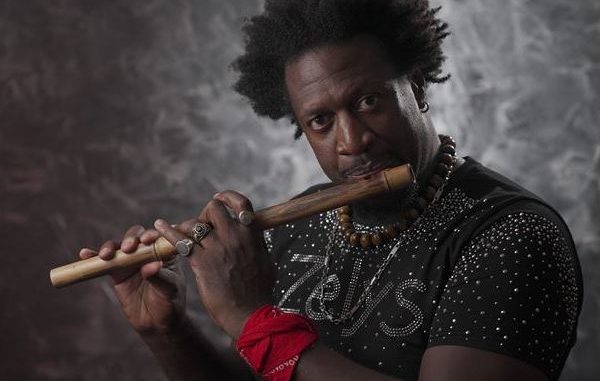

Defender of Martinican culture
Introduced to music by his father, an accordionist, Mona stood out in 1968, winning a Creole song contest at the age of 15.
Determined, he was a self made man.
As a professional musician living mainly from his art, performances and the sale of his records, Mona went far beyond a conventional use of traditional rhythms and musical genres.
He drew on the music of deep Martinique, while breaking its codes, in total creative freedom, both instrumental and musical.
His music was rooted in Martinican heritage, bèlè, haute-taille, biguine, mazurka, Creole waltz, but with an opening on jazz, blues, classical music.
Very conscious and assertive, he had the ambition well before anyone else, to touch the universal, starting from the singular.
With this in mind, he was directly in line with the concept of Negritude, then Antillanity and Creoleness. Moreover, all these intellectuals such as Aimé Césaire, Edouard Glissant, Patrick Chamoiseau and Raphaël Confiant have always recognized themselves in him and praised him. Of all, Aimé Césaire is the one who helped him the most, in particular by producing it regularly at the SERMAC festival (Service Municipal d'Actions Culturelles), at the time one of the biggest festivals in the Caribbean.
An artist not always understood by his time, he was an avant-garde, a visionary, whose pieces have remained current and have not suffered the wear of time.
“At fifteen I could neither read nor write. At twenty-five, I could write and decipher a score.
Eugène Mona (Interview Megamix_1990)
"I am a child from Marigot who wants to touch the universal... It's possible, isn't it?"
Eugène Mona
The man with the bamboo flute
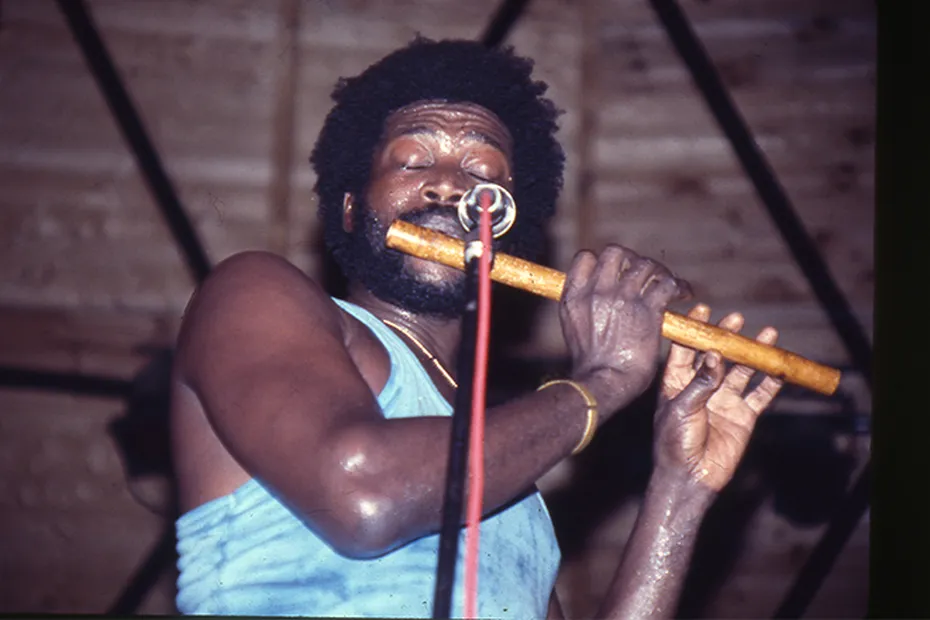

Eugène Mona discovered the bamboo flute at the age of 7. But it is the Martinican flautist, Max Cilla, the father of "the flute of the Mornes" (name of the 6-hole bamboo flute), the creator of the codification of the way to play this instrument, which will reveal its potential and encourage it to develop its technique. It is therefore with Max Cilla that Mona will deepen her art.
The unification of drums at the heart of his work
He wrote hymns dedicated to the drum, a vibratory force that acts on the body and the mind.
A great unifier, he mixed all the traditional drums in his music, something unthinkable at the time, namely:
• Thetanbou dibas, a circular frame drum, used in haute-taille, a type of Martinican quadrille, for the melodic lines;
• The Tanbou bèlè, conical drum with a skin, for rhythmic sequences;
• The tapou drums, Tamil ritual music, from Martiniquans of Indian origin, in honor of the goddess Maldevilin, establish communication with the spiritual world;
All accompanied by the Ti bwa and the Cha-cha.
A powerful self-taught voice
In another world, if he had had a musical education, Eugène Mona could have been an opera singer. His ultra-powerful baritone voice allowed him to modulate according to his desires, sometimes lyrical soaring, lamenting blues, frenzied scat, liturgical chant...
A relentless autodidact, he worked a lot on his voice.
Eugène Mona, the "Standing BLack Man", the Martinican "Punk"
Rebellious, subversive, against the tide of well-meaning, the Martinican bourgeoisie and the consumer society in a Martinique of the 70s in full mutation, the one who was nicknamed "The Negro standing up” stood up all his life against colonialism and social injustice. He encouraged Martinicans to refocus on themselves, not to reject their history, not only their Africanness, but also all aspects of their Creole identity. He also restored the reputation of the bèlè drum and the bamboo flute, more broadly to traditional music.
Some people think he's crazy, he doesn't say the opposite, he even sings it. In the song "Tans pis pour moi-Too bad for me": I look like a fool after all...
"The Barefoot Man"
Eugène Mona preferred to walk without shoes to stay connected to the elements, to better feel the energy, the positive vibrations of the ground. On stage, with his feet firmly anchored, he was master of his body and his mind .
What he explains in his tube: Energy, Vibration, Positive
"Charismatic Stage Man"
Generous on stage, Mona gave herself completely. He ran, jumped, sweated, embodied each of his songs. There was a powerful magnetism that emanated from his person and hypnotized his audience. His concerts often resulted in an extraordinary musical and scenic trance, in which the artist and his audience were one.
With a powerful build, Mona was physically imposing. He saw each concert as a sporting competition and prepared himself physically for it: daily arrival at the stadium around 5 a.m., for a few laps, then voice work with advanced vocalizations in the locker room for 4-5 hours time.
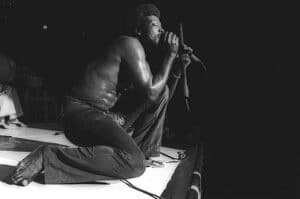

"The Man of Nature"
Eugène Mona found his strength and his balance in Nature: forest, river, sea, countryside...
It was there that he found inspiration, his creative force
He particularly appreciated the unleashed elements (rain, wind, sea swells) which perked him up and with which he entered into communion.
"The Mystical Man"
Eugene Mona has always been on a spiritual quest through various paths.
He believed in the divinity of nature (Pantheism-Animism): God was in all the elements of Nature and each of the men harbored within him a divine part.
A devout Catholic, he often took refuge in the mountains to pray and sing to the Lord, going so far as to do retreats lasting more than 15 days, accompanied by fasting and silence.
It was also marked by the Bondié-couli, the Hindu ceremonies of Martinicans of Indian origin, who arrived around 1853 in the West Indies.
In the early 1980s, it also became closer to the Rastafarian philosophy.
Theology, philosophy interested him and he read and educated himself a lot on the subject.
His songs are punctuated with mantras, snippets of all kinds of proverbs, metaphors.
He included in his traditional Martinican music personal versions of Negro spirituals that blended harmoniously .
Misunderstood artist
Although having had the support of the people and having been the spearhead of a new generation of artists more committed and rooted in Martinican culture (Alfred Varasse and Difé, Joby Bernabé etc), in the early years 80, in the era of zouk, Mona felt rejected.
First by her own, those who praised her before and especially by cultural institutions, from whom he never stopped looking for help.
After a self-produced album fell by the wayside (album very focused on Rastafarianism, then despised by Martinicans), he decided to withdraw from the scene.
His great comeback years later would be short-lived, since death would mow him down just after the finalization of a 9th album.
As he had often predicted, his post-mortem career will be more fruitful than that of his lifetime.
"Bwa Brilé" and "Fas a Fas", the two songs that sum up his life
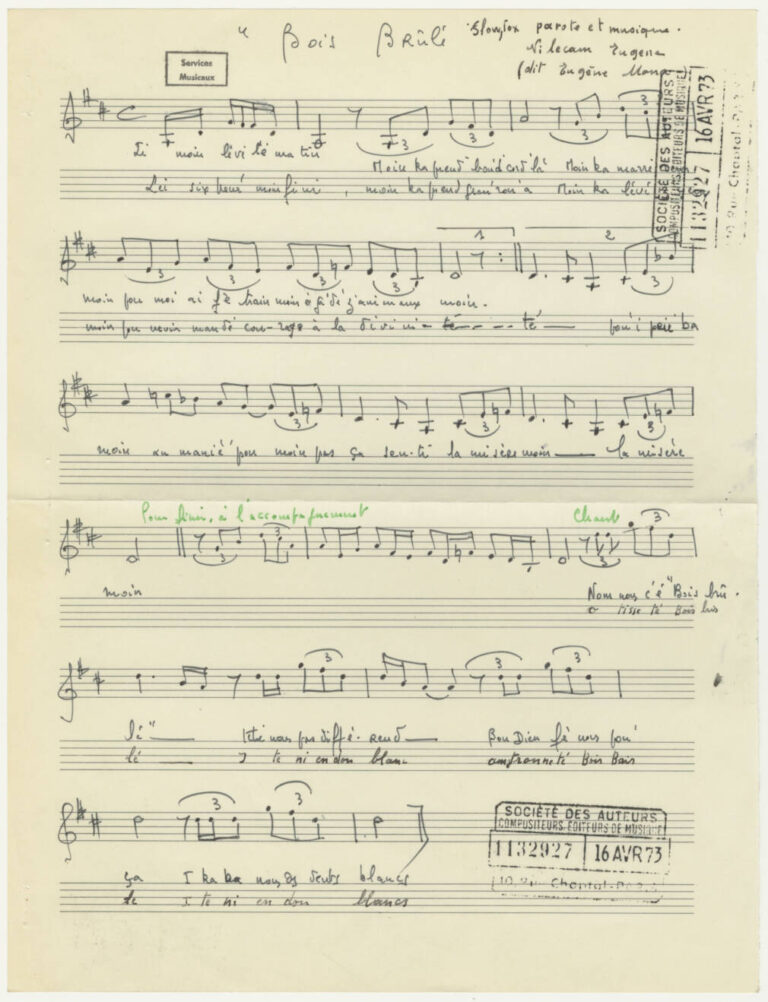

Discography
Distinctions
1975: Silver Album Martinique,
1976: Carifesta Festival in Jamaica,
1978: World Youth Festival in Cuba, strong>
1979: Inter-American tour,
1980: Maracas d'or Grand Prix in Paris,
1982: Grand concert at the Mutualité in Paris,
1990: SACEM Prize…
MORE INFORMATION
The excellent documentary by Martinican director Nathalie Glaudon in 2009
The very interesting archive work of Brut34 on the artist and his music:

